Summary of William Henry Fox Talbot
Talbot is widely credited with inventing modern photography. While it is true that his Calotype invention was unveiled soon after the Daguerreotype, the Frenchman Louis Daguerre's camera yielded a single metallic print, whereas the Calotype produced a photographic negative from which innumerable copies could be made. Given its capacity for reproduction, the Calotype marked the beginnings of a revolution in the visual arts. Not only did it promote photography as a new art medium (and freeing the modern painter from "the duty" of creating realistic pictures of the world), it effectively liberated existing artworks from the confines of the gallery or museum, with printed copies of those works being copied and distributed according to public demand. Talbot's interest in photography saw him pursue new advances in photographic engraving and ink photography, and amongst his later achievements was the production of the first commercially available photographically illustrated book.
Accomplishments
- Following his early experiments with "photogenic drawings", Talbot discovered that, by means of a lens, and a short exposure to light, a latent image would imprint itself on a sheet of chemically treated paper (without the need for physical contact with the paper). The latent image - or negative - could then be "made visible" by washing it in a gallic acid solution. From the resultant negative, Talbot discovered that countless photographic copies could be made. The "Calotype" process would remain the basis of photographic reproduction until the birth of the digital age some 160 years later.
- A true polymath, Talbot worked across many scientific fields, including mathematics, optics, botany, and chemistry. But it was his frustration at never being able to master drawing that led him to experiment with capturing images using a camera. Talbot called one of his first images of a latticed widow at his home, "the first instance on record of a house painting it's own portrait". The choice of a window would prove somehow prophetic as the camera came to be viewed as a "window on the modern world".
- Talbot's book, The Pencil of Nature (1844), was the first publication to carry photographic illustrations. Amongst its entries are examples of the first instances of photography being presented as art (rather than simply a means of mechanical reproduction) with Talbot likening images such as, The Open Door, to "the Dutch school of art [and its] scenes of daily and familiar occurrence". In the text accompanying the image, Talbot explained how he had approached his everyday composition with a "painter's eye" in the sense he had been "arrested [by an image] where ordinary people see nothing remarkable".
- In his later years, Talbot was drawn towards the lasting benefits of permanent printer's ink (the Calotype being prone to fading even after the fixing process). He patented his Photographic Engraving technique that became the basis of virtually all subsequent photography. By this means he produced an etched intaglio plate that produced greater sharpness of detail and halftones, and was printed using stable and permanent printers' ink. Such was its success it laid the foundations for modern photogravure process.
The Life of William Henry Fox Talbot
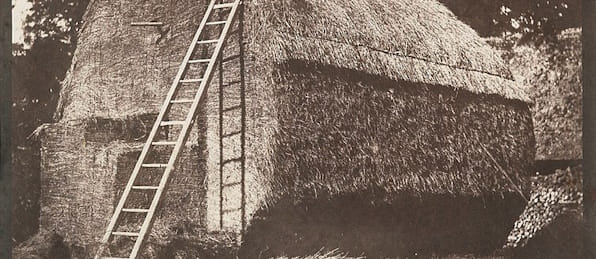
Historian Jeanne Willette writes, "when his photographs are examined, it is clear that we are viewing the mind and the eye of a man of great intelligence and curiosity and a late blooming latent talent for art that was finally expressed in photographs".
Important Art by William Henry Fox Talbot
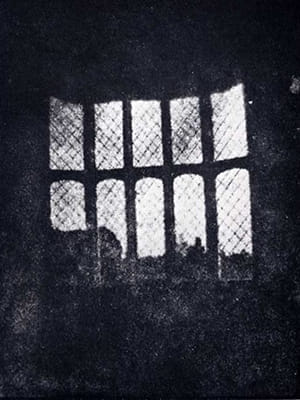
Latticed Window at Lacock Abbey
During a visit to Lake Como, Italy, Talbot was attempting to draw the spectacular landscape with the aid of a camera lucida. Even with the aid of the camera (which allowed him to faithfully trace the image with a pencil) Talbot still felt his drawing skills were left wanting. It was at this moment that he struck on the idea of inventing a machine that could create accurate and fixed images of the world. He later wrote, "Such was the idea [of photography] that came into my mind. Whether it had ever occurred to me before amid floating philosophic visions, I know not, though I rather think it must have done so, because on this occasion it struck me so forcibly".
Talbot produced this image - the earliest paper photograph in existence - some ten years later and by placing a piece of sensitized paper (created using a salt and silver nitrate wash) inside a fixed small wooden box/camera obscura. Talbot captioned the resultant image "Latticed window (with the Camera Obscura) August 1835. When first made, the squares of glass about 200 in number could be counted, with help of a lens". Using this primitive process Talbot realized he could capture images of motionless objects that were not in direct contact with the paper. The photograph is "tonally reversed" (a "negative") where the paper becomes darkened where the bright light makes contact with the treated paper. The "negative" is then washed in a salted solution that reverses the negative image (thereby creating the positive image). The Met Museum calls this fragile image "a remarkable relic of the inventor's earliest attempts to make pictures solely through the action of light and chemicals".
This image, looking outward through a window at Talbot's home of Lacock Abbey, showed that he was a curious scientist with an artist's eye for details. Of all the objects and locations in and around his spacious home and its lush grounds, Talbot understood that a simple pattern of latticework created its own visual interest. Indeed, he called this image "the first instance on record of a house painting it's own portrait". London's V&A museum writes, "Talbot's Latticed Window has come to represent the genesis of photographic seeing. Like a prophetic window, it anticipated the notion that camera-made photographs are often perceived as windows on the world. This was an appropriate motif to herald a new medium that would prompt deeper questions concerning visual and philosophical perception".
Photograph - The National Science and Media Museum, Bradford, UK
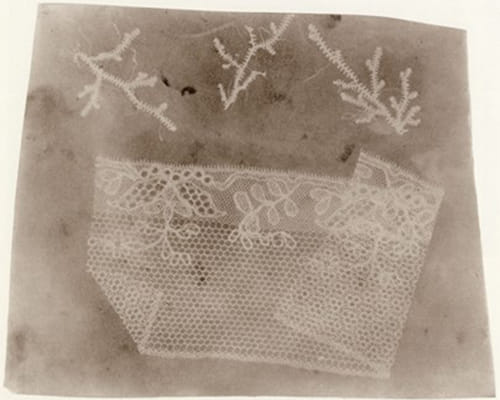
A Fragment of Lace with Three Sprigs of Moss
This image is an example of the type of reverse negative image Talbot was able to produce using his "salted paper" technique. He called the resultant image a "photogenic drawing" (also known as a "photogram"). The technique involving sandwiching an object between a sheet of paper treated with a salt solution and silver chloride, and a sheet of glass, and then placing it in direct sunlight, which would darken the area of the paper not covered by the object(s) and leave the covered areas plain white. The process could then be repeated with the negative image placed between another sheet of treated paper and glass to create a positive (or reverse) image. A single negative could be re-used, with the potential to create countless positives. A few decades earlier, the English inventor Thomas Wedgwood had created similar "photogram" images, though he had not been able to fix the image. Talbot solved this problem by using sodium thiosulphate (also known as "hypo") after the initial exposure to thoroughly remove the silver chloride and thereby permanently fixing the image.
The object Talbot selected here, a swatch of lace and three delicate sprigs of moss, were intended to showcase the fine level of detail that could be achieved with the salted paper process. Curator Lisa Hostetler remarks that viewing Talbot's early photogenic drawings "feels like this intimate experience of looking at a photograph in its first days. Now photography is so ubiquitous that we probably don't think about how special and magical that experience was". The Met Museum adds, "Although such photogenic drawings were beautiful as objects and useful as scientific records, Talbot knew that a fast, permanent, and accurate means of producing photographic images in the camera was the true brass ring [...] Talbot discovered that an exposure of mere seconds, leaving no visible trace on the chemically treated paper, nonetheless left a latent image that could be brought out with the application of an 'exciting liquid' (essentially a solution of gallic acid). This discovery, which Talbot patented in February 1841 as the 'calotype' process (from the Greek kalos, meaning beautiful), opened up a whole new world of possible subjects for photography".
Photogenic drawing negative - Getty Museum, Los Angeles
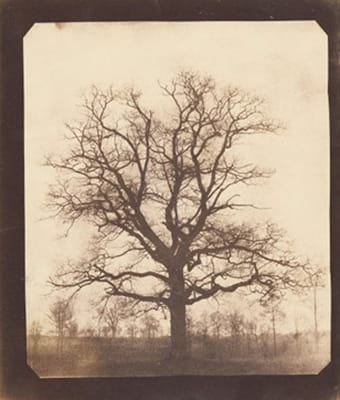
An Oak tree in Winter, Lacock
Talbot's childhood tutor, Dr. George Butler, had seen some of his early Calotypes and was enthused by the potential for this new process. In a letter to Talbot dated March 1841, Butler wrote: "what I should like to see, would be a set of photogenic Calotype drawings of Forest Trees, the Oak, Elm, Beech [and] taken, of course, on a perfectly calm day, when there should not be one breath of wind to disturb and smear-over the outlines of the foliage. This would be the greatest stride towards effective drawing & painting that has been made for a Century. One Artist has one touch for foliage, another has another. [...] but your photogenic drawing would be a portrait; it would exhibit the touch of the great Artist, Nature".
Talbot's image of what the Getty Museum calls his "graceful and heroic oak tree" was amongst the first to be fixed using his recently discovered "hypo" solution. In September 1840, Talbot had discovered that exposure times could be shortened because latent ("sleeping") images impressed themselves onto sensitized paper even after an exposure time of just a few seconds, and that the latent image could be made visible by applying an additional chemical treatment. Nevertheless, images produced by his process were high-contrast (with little to no gray shading) and could not compete for sharpness with the Daguerreotypes (which exposed images on sheets of metal). The Calotypes were also prone to imperfections when the paper did not lay perfectly flat in the camera obscura (even if these imperfections often lent the image a sense of haunted beauty).
Christie's auction house writes, "Talbot had a keen interest in botany and horticulture, and trees were one of his favourite photographic subjects. In a letter, dated 18 March 1841, to the eminent scientist and photo-historian Robert Hunt (1807-1887), Talbot wrote that 'old oak trees [were] very much to [his] taste' and enclosed a few prints, among them an image of an elm tree in winter, which greatly impressed Hunt. Talbot took a number of tree images in winter for he delighted in delineating the intricate detail of the bare twigs, as seen in his Oak Tree in Winter. Of this image [academic and writer] Larry J. Schaaf observed, 'Majestic and alone, the oak presents itself here as master of the landscape'".
Calotype negative and salted paper print - Getty Museum, Los Angeles
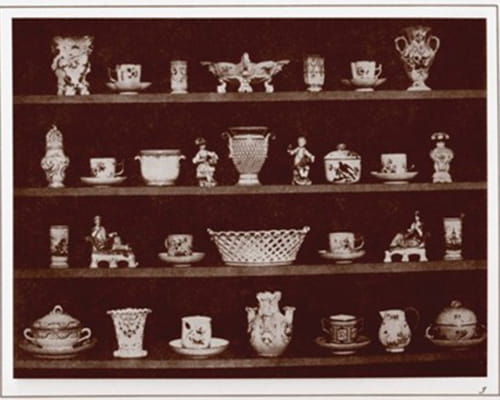
Articles of China
Talbot's book, The Pencil of Nature, was the first commercially-published book to feature photographic illustrations. While the photograph had obvious practical benefits, such as creating visual records of events and objects (imagining a situation where the items in this composition would have been purloined, for instance, Talbot wrote: "if the mute testimony of the picture were to be produced against [a thief] in court - it would certainly be evidence of a novel kind") it was the photograph's potential for a tool to create art that first inspired Talbot's invention. Indeed, in the book's "Introductory Remarks", he stated, "The little work now presented to the Public is the first attempt to publish a series of plates or pictures wholly executed by the new art of Photogenic Drawing, without any aid whatever from the artist's pencil".
Talbot was inspired by the art of the Dutch Golden age and specifically the still life genre that was characterized by carefully considered groupings of objects that were painted with an almost scientific attention to detail. In this image, Talbot shows four shelves of china objects. As with others in the book, the composition is arranged along the lines of the "rule of thirds", that is, the idea that when composing an image the artist/photographer mentally divides the picture into equal thirds separated along equally spaced horizontal lines, and equally spaced vertical lines. Talbot composed this "image of thirds" with a fine eye for contrast and tonality, and by placing his objects (of differing shapes and sizes) at various levels he, like the Dutch masters he admired, was able to transform an ordinary display of everyday items into something visibly arresting.
Salted paper print from paper negative - Metropolitan Museum of Art, New York City
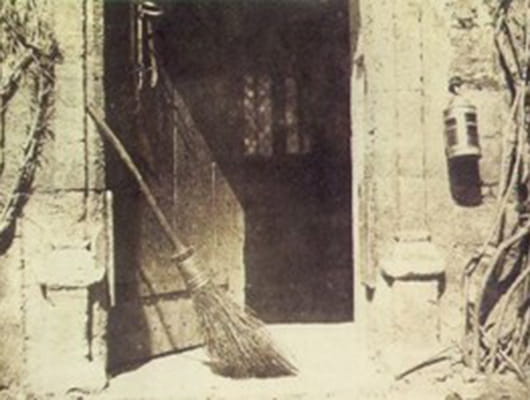
The Open Door
Perhaps his most famous photograph, The Open Door appeared in Talbot's book The Pencil of Nature. Once again it shows him approach pictorial composition in the manner of a painter. In the dark interior, a latticed window is visible. Meanwhile, the exterior of the stable, the area around the open door, is brightly lit, with a lantern hanging on the wall to the right, and creeping plants growing on either side, effectively framing the image. A horse's harness also hangs on the door. In the text accompanying the image Talbot wrote, "We have sufficient authority in the Dutch school of art, for taking as subjects of representation scenes of daily and familiar occurrence. A painter's eye will often be arrested where ordinary people see nothing remarkable. A casual gleam of sunshine, or a shadow thrown across his path, a time-withered oak, or a moss-covered stone may awaken a train of thoughts and feelings, and picturesque imaginings".
The photograph, taken at Talbot's home of Lacock Abbey, does not feature the stately buildings he often photographed. Rather, it presents the halfway-open door of an old stone stable, with a broom positioned precisely so that its handle sits at an angle, running parallel to the shadow cast by the door frame onto the door. It transpires that Talbot took several images of this same scene over the course of a few years, with other versions including different brooms at different angles. But, as British photographer Justin Jones notes, in the other versions, "the composition doesn't work so well [...] There's something not quite satisfying ...". Says Jones, the "final" image (pictured here) "is one of the best photographs ever taken [...] it has a wonderful kind of formal beauty. It's quite austere, in a way, but in another way it's very intimate. There's a kind of interrupted symmetry".
Salted paper print from paper negative - Metropolitan Museum of Art, New York City
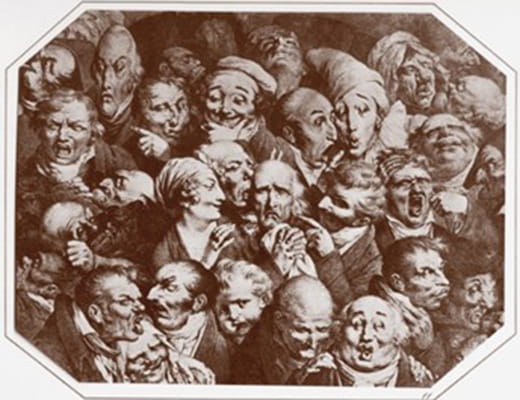
Copy of a Lithographic Print
Describing this image in The Pencil of Nature, Talbot wrote: "We have here the copy of a Parisian caricature, which is probably well known to many of my readers. All kinds of engravings may be copied by photographic means; and this application of the art is a very important one, not only as producing in general nearly facsimile copies, but because it enables us at pleasure to alter the scale, and to make the copies as much larger or smaller than the originals as we may desire".
The rise of the caricature coincided with the birth of the printing press in the 15th century when it was used by Protestant reformers to ridicule the Pope. But it was during the 18th century Revolution that the caricature came into its own in France where it developed as a kind of "political language" through which the working classes (and those aligned with them) attacked the ruling class. By the time Talbot copied this French lithograph (and while he did not comment on the specifics of its content), the caricature had been elevated to a medium that attracted dedicated connoisseurs and critics. The idea that the camera could be used to copy existing artworks (in addition to its own status as an artform, and its practical application as a "window on reality") was of profound social significance for the German philosopher, Walter Benjamin. For him, photographic reproduction of this type had led ultimately to the democratization of art.
Benjamin accounted for this phenomenon in his seminal essay, "The Work of Art in the Age of Mechanical Reproduction", published in 1933. In it, he argued that the photographic reproduction of an artwork (a lithograph in Talbot's early example, but later through photographic copies of original masterpieces) was in fact of higher social value than the original artwork because a photographic reproduction, which might be altered in size and scale, could be owned by anyone and enjoyed by them in a time and place that suits their own wishes. He wrote, "Mechanical reproduction emancipates the work of art from its parasitical dependence on ritual [standing before an original in an art gallery or museum]. To an ever greater degree the work of art reproduced becomes the work of art designed for reproducibility. From a photographic negative, for example, one can make any number of prints; to ask for the 'authentic' print makes no sense. But the instant the criterion of authenticity ceases to be applicable to artistic production, the total function of art is reversed".
Photograph
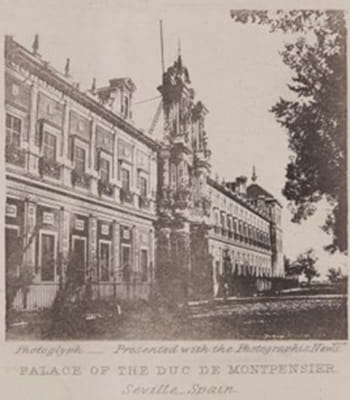
Palace of the Duc de Montpensier
Talbot's development of what he called the "photoglyph" (from the Greek for "carved light", now more commonly known as "photogravure") dominated the final decades of his life. The process involved coating a copper plate with bichromated gelatin, exposing it to light, and subsequently submitting it to a series of other chemical processes, which resulted in a photographic image being etched onto the plate. The plate was then inked and put through a printing press to transfer the image to paper. He created several photoglyphs in his final decades, including portraits, though Talbot seemed particularly interested in using the medium for cityscapes and architectural images.
Nineteenth-century British chemist William Crookes stated that "the brilliant success which has attended the endeavors of our distinguished countryman, Mr. H. Fox Talbot, to solve the problem of the conversion of photographic pictures into engraved plates, makes the present time a new epoch in the history of the art". Crookes was in fact "quite astonished at [the image's] perfection and sharpness of detail," and wrote to Talbot "I have seen specimens of all the processes for effecting a similar thing, but never saw anything equal to these. The difficulty has been in the halftones but the beautiful pictures which I now have before me leave scarcely anything to be desired in that way".
Photography curator Malcolm Daniel concludes "that [Talbot] should have spent so much time developing a process for printing photographs with ink rather than silver salts is not wholly surprising. Talbot's early photogenic drawings are so ephemeral that, despite their exceptional beauty, they can never be exhibited or exposed to light without risk of change. Even his far more stable calotypes fixed with hypo were inconsistent in their permanence, many deteriorating in quick order; a reviewer of the 1862 International Exhibition described some photographs as 'fading before the eyes of the nations assembled.' Thus, Talbot's search for a photographic process using permanent printer's ink was a final step in the refinement of his earlier, still imperfect, invention".
Photoglyph
Biography of William Henry Fox Talbot
Childhood
William Henry Fox Talbot was the only child born to William Davenport Talbot of Lacock Abbey, and Lady Elisabeth Fox Strangways, daughter of the 2nd Earl of Ilchester. William Sr. passed away when Talbot was still just five months old, leaving his mother to inherit Lacock Abbey, which was in ruinous condition (she would later restore the estate to its original glory). Mother and son spent a period of living with various family members before Elisabeth was remarried to Captain (later Re-Admiral) Charles Fielding. The couple had two daughters (Talbot's half-sisters) Caroline Augusta Fielding (later Lady Mt. Edgcumbe) and Henrietta Horatia Maria Feilding.
Day-to-day care-giving duties fell largely to the Talbot family's governess, Agnes Porter (she had performed the same role for his mother when she was a child), while Lady Elizabeth took charge of her son's education. Talbot biographer Larry J Schaaf wrote, "His mother was his primary tutor, and her facility with foreign languages clearly stimulated Talbot's later philological and translation work. Intense interest in botanical studies and gardening throughout Lady Elisabeth's family inspired Talbot's lifelong involvement in botany". In 1811 Talbot was accepted by the famous Harrow School. He was a painfully shy boy who did not mix easily with his fellow borders. Talbot did, however, excel academically. Even at this early age he had taken a dislike to his double-barreled family name and took to signing himself Henry F. Talbot, or H.F. Talbot (although many future writers would continue to refer to him as Fox Talbot).
Education and Early Training
Talbot entered Trinity College, Cambridge, in 1817. He won the Porson Prize in Greek verse in 1820, and the second Chancellor's Classical Medal in 1821. The same year he graduated with his bachelor's degree, with the status of "twelfth wrangler" (meaning he had attained first-class honors in Mathematics). The following year, Talbot began submitting papers to the Royal Society, which he continued to do until 1872 (five years before his death).
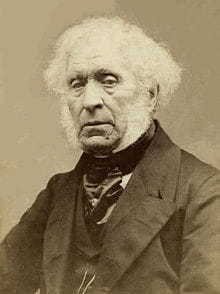
Even before he completed his Masters' degree in 1925, Talbot was moving in elite circles in the fields of science and politics. Schaaf writes, "By the time he met John (later Sir John) Herschel in Munich in 1824, Talbot had already published six papers in mathematics. This chance meeting established a friendship and a scientific collaboration crucial to Talbot's later success and probably influenced Talbot's turn towards research into light and optical phenomena. In 1826, Herschel introduced him to Dr. David Brewster, the important Scottish scientist and encyclopedist. Brewster and Talbot's research on light frequently overlapped. Brewster began publishing Talbot's scientific articles in his journal and the two men forged an unusually close and lifelong friendship". Indeed, Brewster published many of Talbot's articles in the Edinburgh Philosophical Journal, and the Edinburgh Journal of Science, which he had established in 1819 and 1824 respectively. Talbot also had papers published in the Quarterly Journal of Science with essay titles including "Some Experiments on Coloured Flame", "Monochromatic Light", and "Chemical Changes of Colour".
Mature Period
On December 20, 1832, shortly after being elected to the Whig political party (a forerunner of the Liberal party) as the reform candidate for Chippenham, Talbot married Constance Mundy, the daughter of a fellow Member of Parliament in Derbyshire. It was during their honeymoon at Lake Como, Italy, that Talbot had his "eureka moment". He was sitting on the shore of the lake with his new wife and sister-in-law drawing the landscape with the aid of a camera lucida (a device that uses a prism to project an image onto a sheet of paper). However, Talbot felt his drawing skills were decidedly lacking and thought to himself: "how charming it would be if it were possible to cause these natural images to imprint themselves durably and remain fixed upon the paper [and] why should it not be possible?". As photography curator Malcolm Daniel explains, Talbot "jotted down thoughts about experiments he could conduct at home to see if Nature, through the action of light on material substances, might be brought to draw her own picture". When he returned to his home at Lacock Abbey in January 1834, he began his search for a fixed photographic image in earnest.
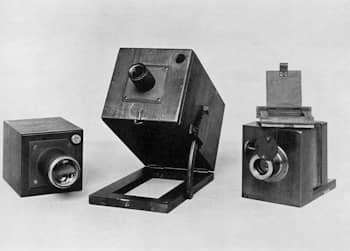
In the autumn of 1834, Talbot was in Geneva, Switzerland, where he experimented with the cliché-verre, or the "glass print" technique. He asked an (unnamed) artist friend to scratch a landscape image on glass coated with an opaque varnish. Talbot then used the image as a negative from which he created positive copies on paper. Schaaf adds, "It was also in Geneva that Talbot first mentioned stabilizing his images against the further action of light by washing them with potassium iodide - a process now called fixing [...]. Another method of fixing, probably noticed by Talbot even before Geneva, was based on his observation that the edges of his paper sometimes darkened at a different rate than the centre. Tracing this to different proportions of salt and silver, Talbot determined that a strong solution of table salt defended the image against further action of light".
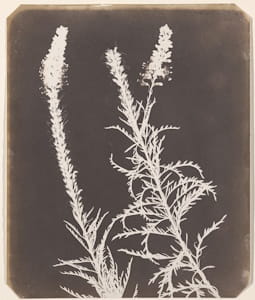
Schaaf writes "At Lacock Abbey, sometime later - in spring of 1834 - he began to convert his dream into reality. By coating ordinary writing paper with alternate washes of table salt and silver nitrate, Talbot embedded a light-sensitive silver chloride in the fibres of the paper. Placed in the sun under an opaque object such as a leaf, the paper would darken where not defended from light, producing a photographic silhouette. Talbot called the resulting negatives (a term devised later, by Sir John Herschel) sciagraphs - drawings of shadows. [...] Encouraged by the 'brilliant summer' of 1835, Talbot laboured to increase the sensitivity of his coatings sufficiently to make camera negatives practical. He immediately grasped the idea that his negatives could themselves be printed on sensitive paper, reversing the tones back to normal and allowing the production of multiple prints from one negative. [The] fundamental concepts of permanent negative-positive photography were all within Talbot's grasp two years after his initial frustration at Lake Como. By the end of 1835, although he had already achieved a high degree of success, Talbot desired to improve matters further before publication, and the knowledge of his discovery remained within his family".
Between 1836-39 Talbot devoted much of his time to his optical and mathematical research. In 1836 his research into crystals led to an invitation to present the prestigious Bakerian Lecture to the Royal Society. In 1838, he was awarded the Society's Royal Medal for his work in mathematics. Meanwhile, and although he had by now effectively retired from political life, Talbot became passionately involved with the Council of Linnean Society (a learned organization dedicated to the preservation and teaching of natural history) who successfully petitioned against the closure of the so-called "Royal vegetable patch" (now the Royal Kew Gardens). It was a busy time in his family life too, with his wife giving birth to three daughters, Ella Theresa, Rosamond Constance, and Matilda Caroline, between 1836-39.
By the start of 1839, Talbot had some thirty scientific papers and two books (with two more the follow later in the year) to his name. But as he was preparing to present his photographic discoveries to the Royal Society, he learned that a French inventor by the name of Louis Daguerre had unveiled his own photographic invention, the Daguerreotype. Although Daguerre is often credited with inventing photography (he himself had built on Joseph Nicéphore Niépce's heliographic and physautotype processes (1826 and 1832 respectively) which used a photograved plate method to fix an image through a camera obscura but whose results were somewhat erratic) Talbot claimed priority of invention based on the argument that his invention was already five years old. The truth of the matter is that the two men were working simultaneously, and unbeknownst to each other.
The two men's processes were, however, fundamentally different. A Daguerreotype was produced by polishing a sheet of silver-plated copper which was then treated with mercury vapor to make the latent image visible, before the application of another chemical treatment to prevent further exposure. However, Daguerreotypes were originals that could not be copied, whereas Talbot's method, which he termed "Calotype" (also sometimes called "Talbotype"), produced a negative image which could then be put through the same process repeatedly producing (potentially) an infinite number of copies.
Although Talbot had read his paper "Some Account of the Art of Photogenic Drawing" before the Royal Society on January 30, 1839, and called before the Society three weeks later to give details of his procedures, he received very little support from the Society, and they refused to publish his findings. Fortunately, in early 1840, the sun began shining brightly again in England, and Talbot was able to produce a series of impressive images. In 1842, the Royal Society awarded him the prestigious Rumford Medal, which is awarded once every two years to a "scientist working in Europe" who has made "an outstandingly important recent discovery in the field of thermal or optical properties of matter". Adding to his mood of contentment, the Talbot's fourth child, a son, Charles Henry Talbot, was born in the same year.
In 1841 Fox Talbot had obtained an English patent for his Calotype process and began selling patent licenses for £20 each. He later offered licenses to amateurs for just £4, whereas professional photographers were asked to pay up to £300 annually (although free for the purposes of scientific research). Talbot traveled to Paris in May 1843 where he hoped to negotiate a licensing agreement for the French rights to his patent but this proved unsuccessful (in France, the Daguerreotype had been made "free to the world"). Talbot was in fact heavily criticized for patenting the Calotype (which he defended by stating that he wished to recuperate the approximately £5,000 he had spent in developing the process). Indeed, Talbot thought that this was an important factor in the early lead of the development of the Daguerreotype which received strong financial support from the French state.
Late Period and Death
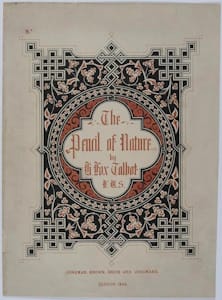
In 1943, Talbot, with his friend and former valet, Nicolaas Henneman, established a photographic printing establishment in the Thames Valley town of Reading (some 40 miles west of London). Between 1844-46 Talbot published, in six installments (fascicles), the first commercially available book to be illustrated with photographs, The Pencil of Nature. The Met Museum described Pencil of Nature as "a milestone in the art of the book greater than any since Gutenberg's invention of moveable type". Talbot himself was optimistic about future developments in photographic technologies, writing in his introduction: "At present the Art [of photography] can hardly be said to have advanced beyond its infancy. [...] When we have learnt more, by experience, respecting the formation of such pictures, they will doubtless be brought much nearer to perfection; and though we may not be able to conjecture with any certainty what rank they may hereafter attain to as pictorial productions, they will surely find their own sphere of utility, both for completeness of detail and correctness of perspective".
Sadly, The Pencil of Nature was not the commercial success Talbot had hoped for and plans for a seventh installment had to be abandoned. He also pursued other routes for mass reproduced images but these too where doomed. As Schaaf writes, "In 1845, Talbot issued by subscription Sun Pictures in Scotland, illustrated with 23 original photographic prints. Another 6000 original prints were supplied to the Art-Union for inclusion in its 1846 volume. This all went tragically wrong. Only when put to the test of mass production was the inherent vice of photographic publishing revealed. Each hand-coated sheet of paper was exposed under fickle sunlight, then fixed and washed, often with inadequate or contaminated water supplies. With so many variables insuring the stability of silver-based prints proved impossible. Many of the photographic plates began to fade, often to the derision of artists who had felt threatened by the new invention". Talbot's sorrow was compounded when his mother, who he credited as the chief inspiration in his life and work, died in 1846.
In 1851 (the year of Daguerre's passing) the English photographer and sculptor, Frederick Scott Archer, announced his collodion wet plate process. Talbot attempted to argue, through a broad interpretation of his patent rights, that anyone using a collodion process would still have to obtain a Calotype license. In 1852, under pressure from the Royal Society and the Royal Academy, who were concerned over the stifling effect that the patent had on the further development of photography, Talbot agreed to waive the patent for amateurs, but continued to demand it of professional photographers, going so far as to file a number of lawsuits. Schaaf writes, "in spite of affidavits by Sir John Herschel and Sir David Brewster, Talbot's patent was effectively destroyed. The court recognized him as the true inventor of photography but ruled that newer processes were outside his patent".
Despite this setback, which impacted on his already failing health, Talbot's continued to refine his printing processes, leading steadily and surely towards shorter exposure times. But by the early 1950s, and with his health improving, Talbot had conceded that his silver images would never be truly permanent and turned his attentions to his newly patented Photographic Engraving process. By this means he produced an intaglio plate that could be printed using stable (and permanent) printer's ink. By 1858 (and by now chiefly resident in Edinburgh) Talbot patented his Photoglyphic Engraving process (the forerunner for the modern Photogravure process). At the 1862 International Exhibition in London, Talbot was awarded a prize medal for his latest invention.
Throughout his professional life, Talbot was also involved in research on spectral analysis (which would have important implications for astronomy and geology), and archaeology, particularly of Ancient Mesopotamia (now Iraq). He was one of the first people to decipher cuneiform writings at Nineveh, the capital of the Assyrian Empire, and he published a number of books on archaeology, as well as English etymology. At the time of his death (from heart disease in September 1877) he was writing an appendix for the English translation of the French edition of The History and Handbook of Photography. In 1966, with Joseph Nicephore Niepce and Louis Jacques Mande-Daguerre, Talbot was inducted into the International Photography Hall of Fame and Museum at the institution's inauguration.
Lacock Abbey and Talbot's archive passed into the care of his son, Charles Henry. Charles never married and the family name ostensibly died with him (in 1916). Of the Talbot sisters, only Matilda bore children, a son, William, and a daughter, also named Matilda, who nursed her uncle Charles at Lacock during the final years of his life. On his death, the Abbey and its contents passed to Matilda who changed her name to Talbot (from Gilchrist-Clark) and committed to protecting Talbot's legacy. As "Lady of the Manor", she successfully managed the estate and donated Talbot's photographic materials to the care of the Science Museum (later transferred to the National Museum of Photography, Film & Television, in Bradford). In 1944, Matilda presented Lacock Abbey to the National Trust, effectively living as the Trust's tenant until her death in 1958.
The Legacy of William Henry Fox Talbot
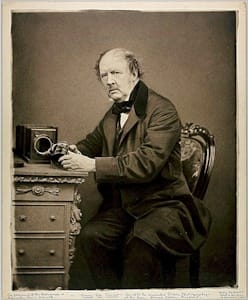
Talbot was a bone-fide polymath who left his mark on overlapping disciplines, including mathematics, physics, and astronomy. His scientific interests were married with his flair for languages, and he completed a series of translations from Assyrian and other ancient languages, and of other historical and philological scripts. These and his scientific studies totalled four books and over sixty articles published in scholarly journals. But it is through his pioneering work in photography that he made his decisive impact on the modern world. While the Calotype could not match its rival, the Daguerreotype, for detail, unlike the latter, which yielded a single plate photograph, Talbot was the first to make a permanent image on paper and from which multiple prints could be made from a single negative. While his work would soon be improved upon by himself and others, such as Frederick Scott Archer (inventor of the collodion wet plate process) and Peter Houston (inventor of the first roll film camera in 1881), it was Talbot's positive-to-negative process that was at the root of a revolution in the visual arts.
As the esteemed art historian E. H. Gombrich put it, "Photography in the nineteenth century was [...] a blow to the position of the artist, as serious as had been the abolition of religious images by Protestantism. [...] So it came about that artists were increasingly compelled to explore regions where photography could not follow them. In fact, modern art would hardly have become what it is without the impact of this invention". Writing in the early 20th century, meanwhile, the German philosopher Walter Benjamin was more impassioned by the revolutionary effect photography had had on the democratization of the "aloof" art world. He wrote: "by making many reproductions [the photograph] substitutes a plurality of copies for a unique experience [standing before an original artwork in a museum or gallery]. And in permitting the reproduction to meet the beholder in his own particular situation, it reactivates the object reproduced. These two processes lead to a tremendous shattering of tradition ...".
Influences and Connections

- The Dutch School
- John Herschel
- David Brewster
- Nicolaas Henneman
-
![Jean-François Millet]() Jean-François Millet
Jean-François Millet -
![Theodore Rousseau]() Theodore Rousseau
Theodore Rousseau -
![Jean-Baptiste-Camille Corot]() Jean-Baptiste-Camille Corot
Jean-Baptiste-Camille Corot ![Charles-François Daubigny]() Charles-François Daubigny
Charles-François Daubigny
- John Herschel
- David Brewster
- Nicolaas Henneman
Useful Resources on William Henry Fox Talbot
- William Henry Fox Talbot: Beyond PhotographyOur PickBy Katrina Dean, Chitra Ramalingam, and Mirjam Brusius
- William Henry Fox TalbotBy H. J. P. Arnold
- Fox TalbotBy John Hannavy
- The Photographic Art of William Henry Fox TalbotOur PickBy Larry J. Schaaf
- The Forms of Nameless Things: Experimental Photographs by William Henry Fox TalbotBy Geoffrey Batchen
- William Henry Fox TalbotBy Geoffrey Batchen
- Specimens and Marvels: The World of William Henry Fox TalbotBy Aperture
- William Henry Fox Talbot: Dawn of the PhotographBy Russell Roberts and Greg Hobson
- Inventing Photography: William Henry Fox Talbot in the Bodleian LibraryBy Geoffrey Batchen
- First Photographs: William Henry Fox Talbot and the Birth of PhotographyBy Arthur Ollman, Carol McCusker, and Michael Gray
 Ask The Art Story AI
Ask The Art Story AI








